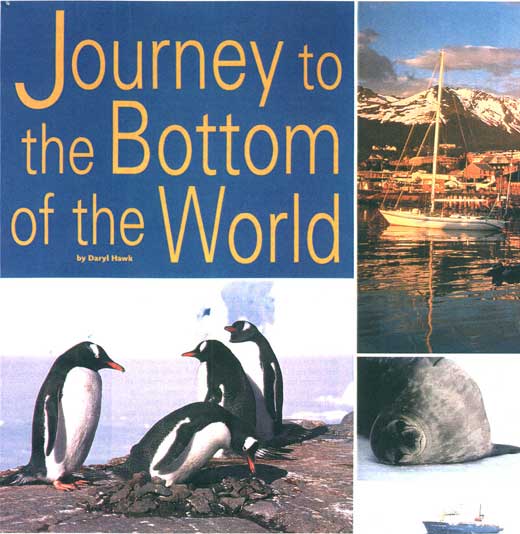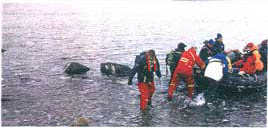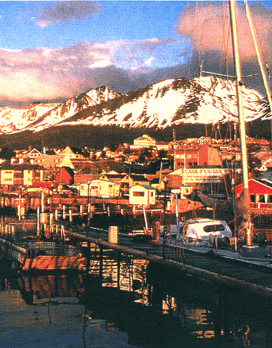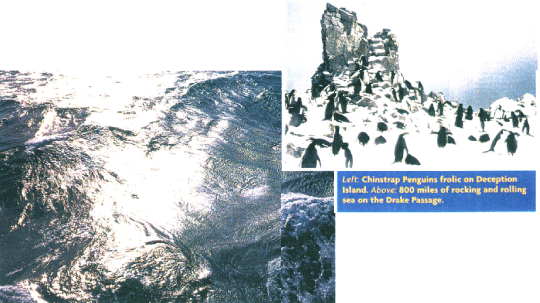
“Antarctica, the great white continent, is one of the most beautiful places on earth. A place where time has no meaning. The next closest thing to setting foot on another planet. Vast and mysterious, with some of the cruelest conditions on earth. This is truly an adventurer’s paradise!
I was lured by the challenge and beauty of earth’s last true wilderness, and inspired by heroic age of polar explorers like Shackleton, Amundsen and Scott. Gigantic iceburgs and ice shelves, an abundance of wildlife, and the enormous emptiness of the polar plateau boggle the mind.


As a documentary photographer, my main objectice is to tell a story about what a given place looks like. I gravitate towards the most remote and least discovered places on earth. I want people to understand and experience these places I vist through my photography.
In Antarctica, I was primarily concentrating on the landscapes and wildlife. of the 100-plus trips I have taken to other states and countries, this would be the first where people photography would not be a consideration.
I also wanted Antarctica all to myself and to experience the environment with as few people as possible. Therefore i chose an expedition that guaranteed we would be the first boat of the season to the continent.



Ushuaia is the most southern tip of South America on the island known as Tierra Del Fuego, Patagonia. Some 800 miles from Antarctica, Ushuaia is the closest departure point from South America.
Ice and weather dictate everything in Antarctica. The only times of the year you can safely go there are from november through April. By leaving in early November we knew we would be the first passenger vessel to access the continent this season.
However, we also know by being the first boat, there were many more risks and obstacles involved. The ice conditions would be unknown, and stepping foot on the continent could not be guaranteed by our Russian captain.
Due to the extreme cold and unpredictable weather of Antarctica, preparing for this trip took greater thought than any of my previous trips. Both proper clothing and photographic equipment are essential to successful pictures in polar climates.
Because of the weather and constantly changing lighting conditions, I decided to bring 100, 200 and 400 speed slide film. This proved to be very wise since some of the days were quite bright while others were cloudy and stormy. I suggest packing at least 10 to 20 more rolls of film than you think you will need – with no place to purchase any extras it becomes a precious commodity.
Quark Expeditions in Darien, Connecticut, is considered to be one of the best companies in the world for polar expeditions. On a Russian ice-strengthened vessel, along with 40 other adventure travelers from around the world and a mostly Russian crew, we departed from Ushuaia, South America, in early November for a two-week voyage.
It is also a good idea if you bring two or even three camera bodies. My Nikon FE2’s were cleaned and lubricated before I left to help ensure reliability. I prefer manual SLRs since I am so familiar with them and can make basic repairs on them because of their simpler designs.
An Antarctic expedition usually means cold and wet conditions whenever you leave the main vessel. Therefore, I wanted to make sure I brought the right clothing. Layering long-sleeve shirts with sweaters underneath a parka would keep the sometimes 20-below-zero temperatures at bay.
After I had explored and photographed Tierra Del Fuego for 10 days, I was anxious to make my way to the “great white continent.” I boarded my boat and at sunset began to cruise through the Beagle Channel. As we passed Cape Horn and entered the open ocean, things began to get rough. Here is a passage from my diary on our third day out:
“I stand at the bow of the boat looking for the first sighting of Antarctica. We get a reprieve from the two day, 600 miles of rocking and rolling, also known as “The Drake Shake,” the roughest waters in the world, separating South America and Antarctica.
We’ve been through 30-foot waves and 45° tilts but the Russian crew seems unfazed. Only the wide-open ocean and ever-present sea birds that follow us the entire way have been my photographic subject matter.
I am in awe on the resilience of the Albatross and Pintadas as they dart and glide thought the strong cross winds. As I stand at the bow of the boat, in the far distance I can make out land.

The Shetland Islands of Antarctica! A dream come true. The silence is exhilarating as we make our way towards the last frontier.”
We made at least two to three Zodiac landings from the main ship onto the ice each day. A “landing” is when the expedition members leave the home base of the ship, board Zodiacs – which are the rubber life rafts which accommodate about eight adults, and make their way through ice floes and icebergs to their destination, either an island or the main land of Antarctica. Since the rough terrain often results in “wet” landings as you step from the Zodiac onto the shore, rubber hip boots are a necessary addition to your gear list.
A small, waterproof Tamrac camera bag kept my equipment dry from splashing waves. It also helped to eliminate condensation once the camera was brought from the cold back into a warm environment.
Our first landing was on Livingston Island, part of the Shetland Islands, off the Antarctic peninsula. We dragged the Zodiac onto the shore and were immediately greeted by elephant seals and giant petrels nesting on the rocks.
Rookeries, or breeding areas, of Adele and Chinstrap Penguins marched as far as the eye could see! The beauty of the landscape was overwhelming and I sat on the ice in a roaring blizzard. I gave my camera a rest and looked out at a magical and surreal world. It was springtime in Antarctica.
The main concern with shooting in extremely cold weather is keeping your camera batteries working. A useful tip is to keep your camera inside your coat when not shooting.
This proved to be very effective. Also, have 6-8 spare batteries in an interior pocket just in case you need replacements.
Reloading wasn’t the cameras wasn’t a problem. The temperature varied from 20° above to 20° below zero, maybe 30° with the wind chill, which is not considered extreme, and I was able to load the cameras right there on the ice. rewind the film very slowly – cold makes film more brittle and I didn’t want to snap it. Needless to say, this is no place for a motor drive.
I wanted to avoid changing lenses as much as possible. The new Nikon 20-200mm f/3.5-5.6 zoom lens proved to be great for all subject matter. I quite often sat on the ice and let the penguins approach me, which led to some of my best shots. Since I was often around 20 feet from the seals, nesting birds and penguins, my 200mm zoom was more than sufficient.
Ninety percent of the time I was aiming my camera towards ice or water. Therefor, I used my polarizer filter quite often and bracketed my exposures when I was shooting a very important shot. In order to determine my exposures as accurately as possible, I would aim my camera at my hand, get a reading and then open up one more stop.
I highly recommend buying a pair of glomitts – fingerless gloves that have mitten overlaps to cover your fingers. Wearing these makes shooting much easier in extremely cold weather.
Being so familiar with my photography equipment and film allowed me to experience Antarctica to its fullest. Having the proper clothing made the daily routines in various weather conditions go much more smoothly.
Every day was an adventure in Antarctica. Photographing landscapes that were magical, surreal and pristine was an experience I will treasure forever. The photography was obviously an important part of this expedition since it is my way of showing others what life at the bottom of the world is really like.
